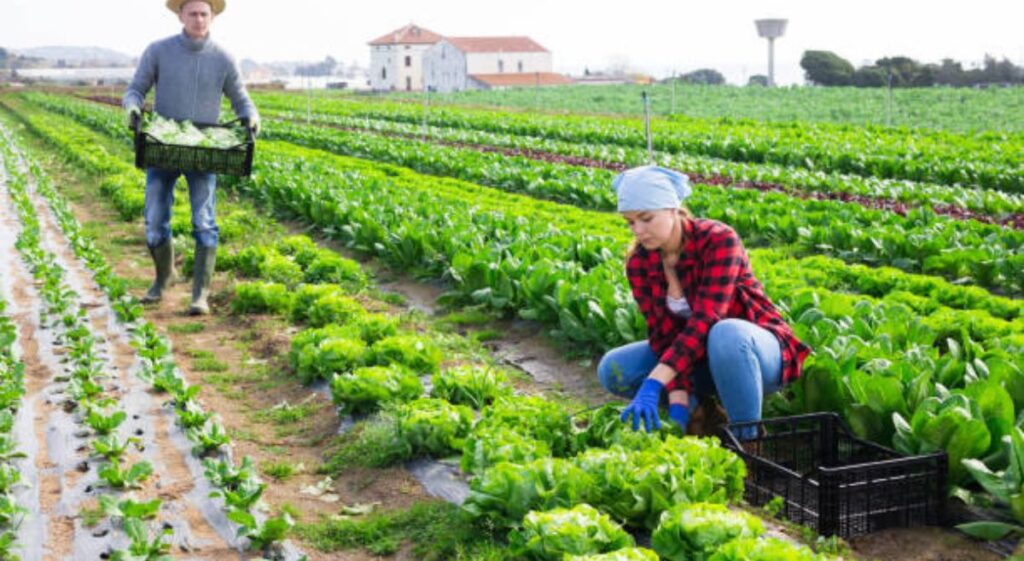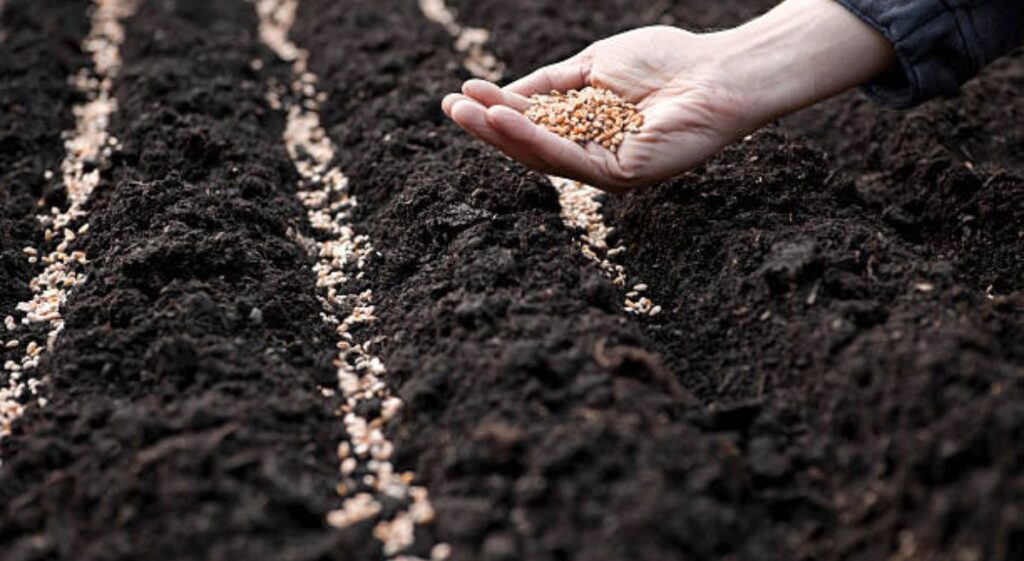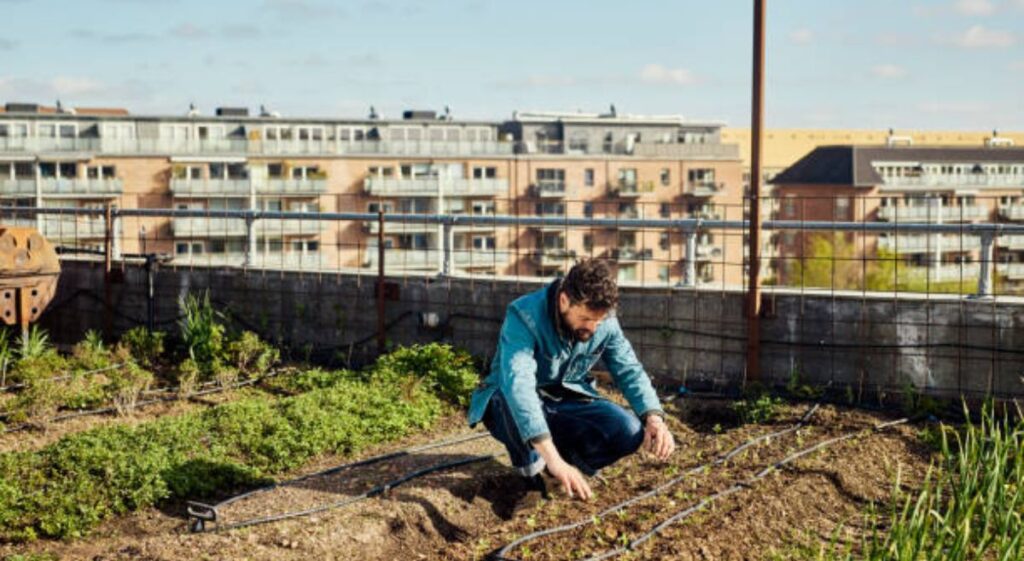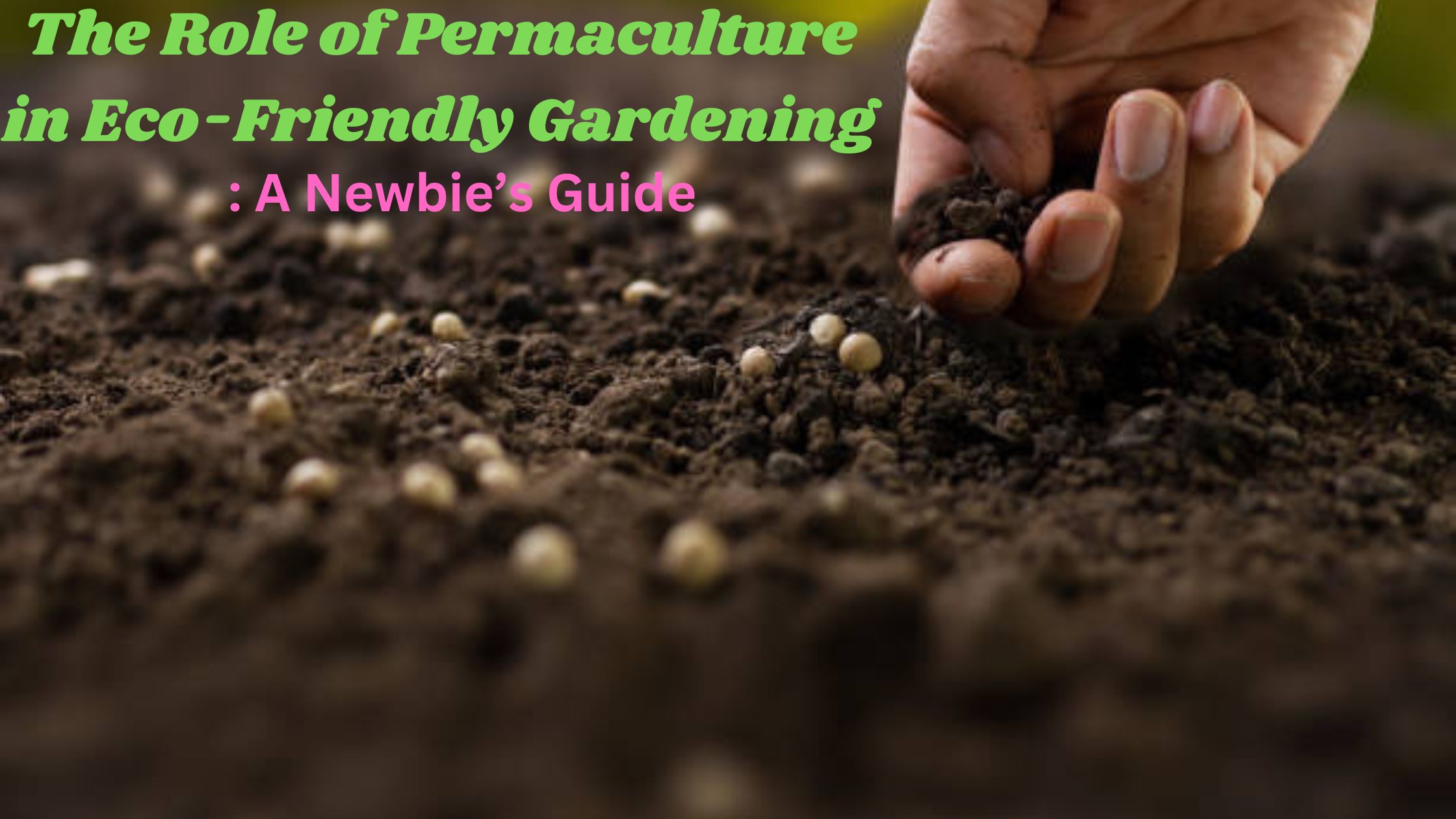Introduction
The Role of Permaculture in Eco-Friendly Gardening: A Newbie’s Guide

Gardening transcends mere leisure; it provides an opportunity to forge a profound connection with nature while actively contributing to environmental sustainability. For novices seeking eco-friendly practices, permaculture presents a comprehensive approach capable of transforming your garden into a vibrant, self-sufficient ecosystem. Embark on this rewarding journey with our beginner’s guide, which elucidates the pivotal role of permaculture in sustainable gardening and offers practical steps to get you started..
What is Permaculture?
Permaculture, a design philosophy rooted in the 1970s by Bill Mollison and David Holmgren, envisions the creation of self-sustaining ecosystems. The term encapsulates the objective of developing agricultural practices that align harmoniously with nature. Permaculture draws upon principles from ecology, organic farming, and traditional agricultural knowledge, aiming to establish sustainable and self-sufficient systems.
The role of Permaculture
1. Planning Your Garden Layout:
- Map out your garden space, considering light conditions, water flow patterns, and soil types.
- Design your layout to optimize plant growth and resource management.
2. Choosing Appropriate Plants:
- Select plants suited to your local climate and soil conditions.
- Prioritize native species and those beneficial to wildlife.
3. Building Healthy Soil:
- Invest in building healthy soil through composting, mulching, and incorporating organic matter.
- Healthy soil is the foundation of a successful permaculture garden.
4. Water Management Strategies:
- Install rain barrels, swales, or drip irrigation systems to conserve water.
- Design your garden to capture and retain rainwater.
5. Creating Habitats for Wildlife:
- Incorporate birdhouses, insect hotels, and native plants to attract beneficial wildlife.
- These creatures play a crucial role in pollination and pest control.
6. Companion Planting:
- Practice companion planting to support plant growth and minimize pest issues.
- For example, plant nitrogen-fixing legumes alongside vegetables to enrich the soil.
7. Starting Small and Expanding Gradually:
- Begin with a small project or garden bed to gain experience and confidence.
- As you learn and grow, expand your garden and incorporate more permaculture principles.
8. Education and Community Engagement:
- Read books, attend workshops, and connect with local permaculture groups.
- Continuous learning and community engagement enhance your gardening skills.
9. Observing and Interacting with Your Environment:
- Understand your local environment by observing water flow, sunlight exposure, and thriving plant species.
- Interact with these elements to design a garden that mimics natural systems.
10. Catching and Storing Energy:
- Utilize natural resources like sunlight and rainwater efficiently.
- Incorporate rain barrels, solar panels, and compost bins to capture and store energy and nutrients.
11. Obtaining a Yield:
- Ensure your garden provides tangible benefits, such as fresh produce, herbs, or flowers.
- A successful permaculture garden should meet your needs while contributing to the ecosystem.
12. Applying Self-Regulation and Feedback:
- Regularly assess your garden’s performance and make adjustments.
- Permaculture encourages adaptive management to improve sustainability and efficiency.
13. Using and Valuing Renewable Resources:
- Prioritize resources that regenerate naturally.
- Use compost and organic matter to enrich soil rather than synthetic fertilizers.
14. Designing from Patterns to Details:
- Start with a broad design and gradually refine the details.
- This approach ensures that all elements work together cohesively.
15. Integrating Rather than Segregating:
- Combine elements of your garden to create mutually beneficial relationships.
- For example, plant companion plants that deter pests or attract beneficial insects.
16. Using Small and Slow Solutions:
- Implement gradual changes and small-scale solutions.
- This approach allows for experimentation and adaptation over time.
17. Valuing Diversity:
- A diverse garden is more resilient.
- Incorporate a variety of plants, animals, and microorganisms to enhance biodiversity and ecosystem stability.
18. Using Edges and Valuing the Marginal:
- Utilize the edges of your garden creatively.
- These areas often have unique microclimates and can be ideal for growing certain plants.
19. Creatively Using and Responding to Change:
- Embrace change and view it as an opportunity for improvement.
- Adapt your garden design as needed to respond to evolving conditions.
Benefits of Permaculture in Eco-Friendly Gardening
- Ecological Balance: Permaculture promotes long-term sustainability by reducing reliance on external inputs, thereby promoting ecological balance.
- Resource Conservation: By utilizing natural resources wisely, permaculture minimizes waste and energy consumption, fostering resource efficiency.
- Biodiversity Enhancement: A diverse permaculture garden supports a wide range of plants and wildlife, enhancing ecosystem resilience.
- Self-Sufficiency Promotion: Permaculture encourages self-reliance through producing one’s own food and reducing dependence on commercial products, fostering self-sufficiency.
- Environmental Stewardship: Practicing permaculture helps mitigate environmental impacts and cultivate a profound connection with nature, promoting environmental stewardship.
How can permaculture improve soil health?
In permaculture, improving soil health is paramount for sustainable and resilient ecosystems. Here are seven key ways permaculture enhances soil health:

1. Enhancing Soil Structure:
- Permaculture Techniques:
- No-Till Farming: Preserves soil structure, allowing natural aeration and moisture retention.
- Mulching: Protects soil from erosion, retains moisture, and promotes a crumbly structure.
- Benefits:
- Improved soil structure supports root growth, water infiltration, and microbial activity.
2. Increasing Organic Matter:
- Permaculture Techniques:
- Composting: Enriches soil with organic matter, improving texture and fertility.
- Green Manures and Cover Crops: Add organic matter when decomposed, protect soil, and suppress weeds.
- Benefits:
- Increased organic matter improves soil fertility, moisture retention, and carbon storage capacity.
3. Promoting Biodiversity:
- Permaculture Techniques:
- Polyculture: Mimics natural ecosystems, supporting a healthy soil ecosystem.
- Companion Planting: Enhances nutrient availability and reduces the need for chemical fertilizers.
- Benefits:
- Biodiverse soil is more resilient to pests, diseases, and environmental stresses.
4. Nutrient Cycling and Balance:
- Permaculture Techniques:
- Nitrogen Fixing Plants: Naturally add nitrogen to the soil through symbiotic relationships with bacteria.
- Chop and Drop: Returns nutrients to the soil and acts as a natural mulch.
- Benefits:
- Efficient nutrient cycling reduces the need for external inputs and enhances soil fertility.
5. Improving Water Management:
- Permaculture Techniques:
- Swales and Contour Planting: Distribute water evenly, preventing erosion and maintaining moisture levels.
- Hugelkultur: Creates a moisture-retentive environment, requiring less irrigation.
- Benefits:
- Better water management reduces erosion, prevents nutrient runoff, and maintains soil moisture.
6. Encouraging Soil Life:
- Permaculture Techniques:
- Vermiculture: Introduces beneficial microorganisms and enzymes that break down organic matter.
- Minimal Soil Disturbance: Protects the habitat of soil organisms like earthworms, fungi, and bacteria.
- Benefits:
- A healthy soil ecosystem is vital for nutrient cycling, disease suppression, and overall soil vitality.
7. Avoiding Harmful Chemicals:
- Permaculture Techniques:
- Organic Pest Control: Utilizes natural predators, companion planting, and organic solutions.
- Natural Fertilizers: Rely on compost, manure, and organic fertilizers to maintain the natural balance of soil nutrients.
- Benefits:
- Avoiding synthetic chemicals protects soil organisms and prevents the degradation of soil structure and fertility.
By mimicking natural processes, promoting biodiversity, and enhancing the soil’s physical and biological characteristics, permaculture improves soil health. Implementing these techniques creates rich, fertile soil that supports healthy plant growth and contributes to a resilient, sustainable garden ecosystem.
What are common mistakes to avoid in permaculture gardening?
Common Pitfalls to Avoid in Permaculture Gardening for Beginners

Permaculture gardening aims to create self-sustaining, sustainable ecosystems. However, beginners often encounter pitfalls that can hinder their success. Here are key mistakes to watch out for and proactive solutions to help you build a thriving permaculture garden:
1. Insufficient Observation and Analysis
Mistake: Neglecting to thoroughly assess your garden’s characteristics, such as sunlight patterns, water flow, wind, and soil conditions.
Solution: Invest time in observing how natural elements affect your garden. Analyze soil, drainage, and microclimates. This knowledge enables you to design a permaculture system that works in harmony with nature, not against it.
2. Overly Complex Design
Mistake: Creating an intricate design with too many elements or features.
Solution: Start with a simple layout focused on basic needs. As you gain experience, gradually add more elements. A simpler design is easier to manage and allows for learning and adaptation without feeling overwhelmed.
3. Overlooking Soil Health
Mistake: Neglecting to build and maintain healthy soil.
Solution: Prioritize improving soil health through techniques like composting, mulching, and incorporating organic matter. Healthy soil nourishes plants and boosts garden productivity. Regularly test and amend your soil as needed.
4. Inappropriate Plant Selection
Mistake: Choosing plants not suited to your climate, soil, or growing conditions.
Solution: Select plants adapted to your specific environment. Consider native species and those that complement each other in terms of growth habits and needs. Research plant requirements to ensure they align with your garden’s conditions.
5. Ineffective Water Management
Mistake: Overlooking the importance of efficient water management.
Solution: Implement water-saving methods like rainwater harvesting, drip irrigation, and swales to conserve and manage water effectively. Design your garden to capture and distribute water efficiently, minimizing waste and promoting plant health.
6. Neglecting Maintenance and Care
Mistake: Assuming that once established, a permaculture system needs no further attention.
Solution: Regular maintenance is crucial for a healthy, productive garden. Monitor plant growth, manage pests, and make necessary adjustments. Ongoing care ensures the balance and efficiency of your permaculture system.
7. Underestimating Pest and Disease Management
Mistake: Ignoring the potential for pests and diseases in a permaculture garden.
Solution: Implement integrated pest management (IPM) strategies compatible with the permaculture framework. Utilize natural predators, companion planting, and physical barriers to manage pests and diseases without resorting to synthetic chemicals.
8. Ignoring Companion Planting Principles
Mistake: Not utilizing the benefits of companion planting.
Solution: Incorporate companion plants that support each other through mutual benefits like pest control, nutrient sharing, and improved growth. Properly planned companion planting enhances overall garden health and productivity.
9. Disregarding Local Regulations
Mistake: Overlooking local gardening regulations, especially in urban areas.
Solution: Check zoning laws, building codes, and community guidelines before starting your permaculture garden. Ensure your design complies with regulations regarding structures, water usage, and plant types.
10. Lack of Continuous Learning
Mistake: Sticking to outdated practices or not seeking new information.
Solution: Stay informed about permaculture principles, gardening techniques, and environmental trends. Attend workshops, read books, and engage with the permaculture community to continuously improve your knowledge and practices.
11. Overuse of Resources
Mistake: Using more resources than necessary, such as water, soil amendments, or energy.
Solution: Apply permaculture principles to optimize resource use. Focus on sustainable practices that reduce waste and conserve resources. For example, use natural composting and recycling methods to minimize input requirements.
By avoiding these common mistakes and embracing thoughtful planning, continuous learning, and application of permaculture principles, you can create a thriving permaculture garden that is both sustainable and rewarding.
Conclusion
Within the realm of gardening, permaculture emerges as a transformative approach. Rooted in eco-friendly principles, it fosters a harmonious relationship with the environment. By gaining insight into and implementing permaculture principles, you can establish a sustainable, productive, and resilient garden. Embark on this journey, and you’ll not only witness a thriving garden but also make a positive contribution to the planet.
References
- Mollison and Holmgren’s books provide in-depth looks at permaculture principles and design strategies.
- Hemenway focuses on applying permaculture principles in urban and suburban settings.
- Gaia Education and UNEP offer concise overviews of permaculture and its applications.
